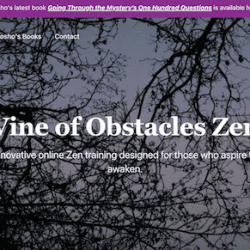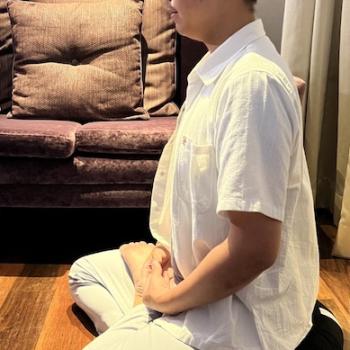 Dear James Ford on and in his Monkey Mind has raised the issue of money and dharma in his recent post, Fee for Service Buddhism: A Small Meditation on Money and the Dharma. James cites several blogs that also wrangle with this issue and I have spent time browsing in that varied field.
Dear James Ford on and in his Monkey Mind has raised the issue of money and dharma in his recent post, Fee for Service Buddhism: A Small Meditation on Money and the Dharma. James cites several blogs that also wrangle with this issue and I have spent time browsing in that varied field.
And, dang, the way some people talk to each other on the web. Good lord buddha. Can’t we all just get along?
Unlike the monk in the photo, most of us ain’t in Kansas anymore. Nor Japan.
Money and dharma is an important issue and deserves an intelligent and balanced work-through, so thanks to James for again rising through the fray.
This post is a short reflection on my experience as a teacher who has used a variety of money models over the years and is now one of those infidels who’ve adopted a fee-for-service model, primarily for my online work, Vine of Obstacles: Online Support for Zen Training (which is now open for a couple three more students, by the way, so click here for more information).
The reason for this is simple. Back in February when I was considering rolling out the Vine, I also had to consider my financial responsibilities and limited time. If I were to devote a big chunk of time to make this a quality program, I knew that it was necessary for the income from it to be sustainable and predictable. Now, of course, I offer scholarships to those who cannot afford the fee and reserved several seats in the Vine cyber zendo for scholarship students.
I also knew from years of experience that the dana (aka, donation) model is often translated “discount” by Western students and is often (but not always) neither sustainable or predictable. For example, I know a number of Zen teachers who live on less than $5,000 a year (plus housing). Although I think it noble to live such a life, it isn’t possible for me at this time and I wonder if it is truly sustainable for anyone.
That said, it isn’t always the case that the dana model is the unsustainable, discount model. I know of one local community in the vipassana tradition, Common Ground Meditation, that has thrived with the dana model. Led by an old friend, Mark Nunberg, they’ve used it exclusively over a twenty-year period and gradually developed a group norm such that it works.
But the facts on the ground seem to be that this isn’t often the case, as James also reports. In my teacher support group, we talk about money quite often, and agree that there is a relationship between students who are reluctant to offer a fair amount of dana for “services rendered” and who are reluctant to do the dharma work.
Might be the “how we do one thing is how we do everything” principle. This is also often the case with students on scholarship (not always, especially you current students on scholarship in the Vine!).
So how about letting the 10,000 flowers bloom, you bloggers. How about trusting in the intelligence of students to make a choice? There are lots of places to practice, the spiritual market place is booming and blooming, so I encourage people to look around a find a teacher, practice and community – and money model – that seems to fit close enough and jump in.
It takes years of practice to really know each other and to really settle into being who we are. Waiting for being dumb-struck by the perfect teacher, practice, and community is … well, unlikely and probably a fantasy so don’t wait for that. “Ring the bell that still can ring, forget your perfect offering,” singeth Leonard.
And as my mother often said, “There is no free lunch.”
Or as Eliza Gilkyson sings, “The price we pay – willing.”











